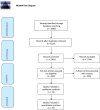Postoperative pain management in non-traumatic emergency general surgery: WSES-GAIS-SIAARTI-AAST guidelines
- PMID: 36131311
- PMCID: PMC9494880
- DOI: 10.1186/s13017-022-00455-7
Postoperative pain management in non-traumatic emergency general surgery: WSES-GAIS-SIAARTI-AAST guidelines
Abstract
Background: Non-traumatic emergency general surgery involves a heterogeneous population that may present with several underlying diseases. Timeous emergency surgical treatment should be supplemented with high-quality perioperative care, ideally performed by multidisciplinary teams trained to identify and handle complex postoperative courses. Uncontrolled or poorly controlled acute postoperative pain may result in significant complications. While pain management after elective surgery has been standardized in perioperative pathways, the traditional perioperative treatment of patients undergoing emergency surgery is often a haphazard practice. The present recommended pain management guidelines are for pain management after non-traumatic emergency surgical intervention. It is meant to provide clinicians a list of indications to prescribe the optimal analgesics even in the absence of a multidisciplinary pain team.
Material and methods: An international expert panel discussed the different issues in subsequent rounds. Four international recognized scientific societies: World Society of Emergency Surgery (WSES), Global Alliance for Infection in Surgery (GAIS), Italian Society of Anesthesia, Analgesia Intensive Care (SIAARTI), and American Association for the Surgery of Trauma (AAST), endorsed the project and approved the final manuscript.
Conclusion: Dealing with acute postoperative pain in the emergency abdominal surgery setting is complex, requires special attention, and should be multidisciplinary. Several tools are available, and their combination is mandatory whenever is possible. Analgesic approach to the various situations and conditions should be patient based and tailored according to procedure, pathology, age, response, and available expertise. A better understanding of the patho-mechanisms of postoperative pain for short- and long-term outcomes is necessary to improve prophylactic and treatment strategies.
Keywords: Acute; Emergency; Morbidity; Pain; Surgery; Treatment.
© 2022. The Author(s).
Conflict of interest statement
All authors declare to have no competing interests.
References
-
- Sacerdote P, Coluzzi F, Fanelli A. Sublingual sufentanil, a new opportunity for the improvement of postoperative pain management in Italy. Eur Rev Med Pharmacol Sci. 2016;20(7):1411–1422. - PubMed


